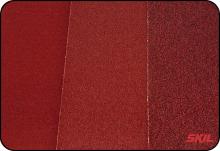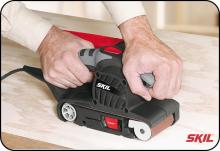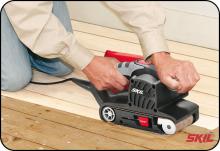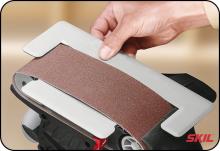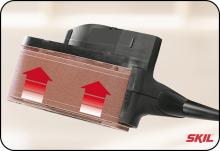-
How to get the best sanding results
The quality of the sanding result depends on various factors. It’s important to replace worn sanding sheets in good time, for instance. And we’d never recommend using the same sanding sheet for wood and metal. You should also take the grain size of the sanding sheet into account. -
Switch on the belt sander before the sanding base comes into contact with the workpiece. Guide the tool along the work surface parallel to it, rather than at an angle, to avoid making unsightly sanding marks. A straight movement with the grain of the wood produces the best results in bare wood. Oval movements are preferable on other surfaces.
-
It’s also important not to apply too much pressure when sanding. If you push too hard on the sander the results will be less good, the sanding sheet will wear faster and you’ll tire yourself out unnecessarily.
-
Attaching a sanding frame to the belt sander ensures it remains flat on the workpiece. That prevents the belt sander from digging into the workpiece and ensures good sanding results, even when you remove old paint and lacquer layers.
-
It’s also important to ensure that the sanding belt remains centred while you’re sanding. In some belt sanders, this is done automatically when you turn on the tool.
